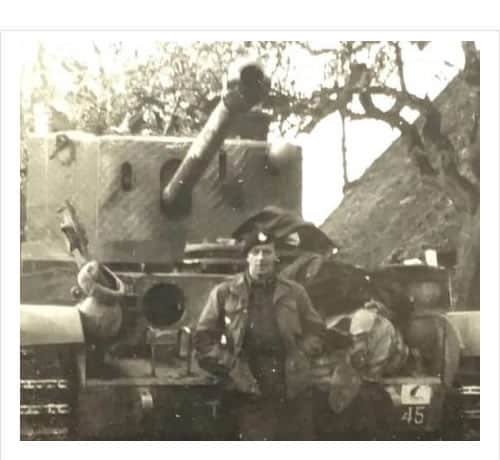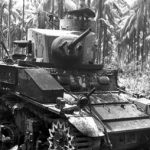The Tank, Cruiser, Challenger (A30) was a British tank of World War II. It mounted the Quick Firing (QF) 17-pounder anti-tank gun on a chassis derived from the Cromwell tank to add anti-tank firepower to the cruiser tank units.
The design compromises made in fitting the large gun onto the Cromwell chassis resulted in a tank with a powerful weapon and reduced armour.
The extemporised 17-pounder Sherman Firefly conversion of the US-supplied Sherman was easier to produce and, with delays in production, only 200 Challengers were built. The Challenger was able to keep up with the fast Cromwell tank and was used with them.
The 17-pounder gun mounted on the Challenger offered sufficient performance against the majority of German AFVs, including the Tiger I and Panther tank and the tank, had a higher top speed and cross-country mobility than the Panzer IV or StuG III.
The Challenger could only hold 48 rounds of the large 17-pounder ammunition because the General Staff required four men in the turret, though later tanks like the Centurion used a three-man turret. The armour of the Challenger offered very little protection against contemporary German anti-tank guns and was lower than that of the Cromwell, which often operated with Challengers.
In combat, the Challenger fulfilled much the same role as the Sherman Firefly, providing overwatch for the other tanks in the troop, as its 17-pounder could penetrate almost all German AFVs frontally, unlike the 75 mm.
It was deployed in a similar manner at a troop level, this was typically one 17-pounder armed tank (such as Challenger or Firefly) to three 75 mm armed tanks (Cromwells or Shermans); at times, the deployment of 17-pounder armed tanks was increased to two per troop.
The Challenger was based on the reliable Cromwell tank, which used the new Rolls-Royce Meteor engine, which was far more reliable and powerful than the ageing Liberty engine used in earlier British Cruiser designs like the Crusader tank.
Its reliability was slightly below that of the Cromwell, as a problem was experienced with track throwing, caused by mud building up in the wheels but this was resolved in the field. Supply and maintenance were vastly simplified through the use of common parts with the Cromwell.
In comparison with the Firefly, the tank lacked the sloping forward armour but presented a lower profile and avoided the Firefly’s constraint on gun depression. The Challenger provided 10° of gun depression while Firefly was limited to 5°, which was a significant disadvantage in combat.
It was preferred within Cromwell units as it shared similar mobility and manoeuvrability, whereas the Firefly was slower.
Despite a lower design weight than the earlier A29 specification (32½ not 34 tons), the Challenger was heavy and required dockyard equipment to ship, making it impractical to use in amphibious assaults such as the D-day landings.



